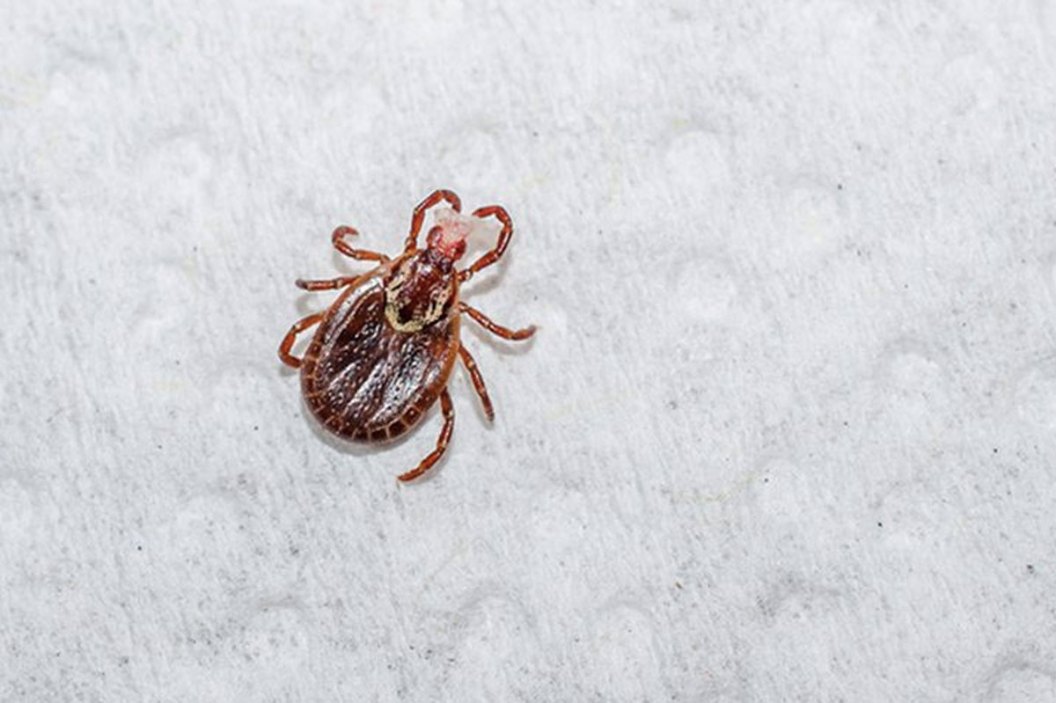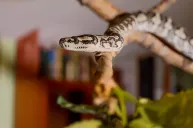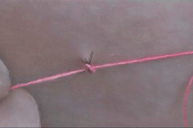Why spend $100 or more on anti-tick tubes when you can easily make just as effective, DIY tubes for a fraction of the cost? Here's how.
Ticks! The little blood-sucking, disease-carrying vermin are the bane of every outdoorsman's existence. Tick tubes—or as I like to call them, anti-tick tubes—are a hot and effective tick repellent on the market right now.
Tick tubes are basically cardboard tubes stuffed with Permethrin-laced cotton. They work by using mice and squirrels—tick carrying rodents—as a mechanism with which to spread the tick-killing poison.
Mice or squirrels find the cotton and take it back to their nests to line them. If you were a mouse you would just naturally love to line your nest with cotton...they can't resist it!
So once the mice haul the poison-laced cotton back to their nests the Permethrin kills any ticks it comes in contact with, including those on the mice themselves.
Permethrin is safe to the rodents; it is, however, lethal to ticks and other insects. It is also toxic to cats and fish, so use your best judgement if those are concerns.
Tick tubes are said to be up to 90-percent effective in decimating the tick population, making them one of the most effective tick repellents around.
A set of 24 brand-name tick tubes costs $80 on Amazon. A 6-pack of another brand of tubes costs nearly $40. That means it will cost you at least a couple hundred dollars to treat your yard twice a year, which is recommended. But why pay big money twice a year when you can make effective anti-tick tubes at a fraction of the cost?
For a few bucks, you can make your own anti-tick tubes that are just as effective, saving you a ton of money and keeping your yard free of both ticks and Lyme disease.
How much money can you save?
- Permethrin: $15 for 24 ounces.
- Cotton balls: under $2
- Tubes: free
That's less than $20!
All you need to do for the tubes is amass a few dozen from your toilet paper rolls. They may not be as thick or durable as a commercial tick tube, but they will work quite nicely all the same. And as an added benefit, they will biodegrade much more readily than will a heavy duty cardboard tube.
Also, Permethrin and cotton balls can perform double duty. You can certainly use the Permethrin on your clothes as a tick repellent, and you can use any left-over cotton balls as fire starters in your survival emergency kit or in the bathroom to remove make-up (camo make-up, of course!).
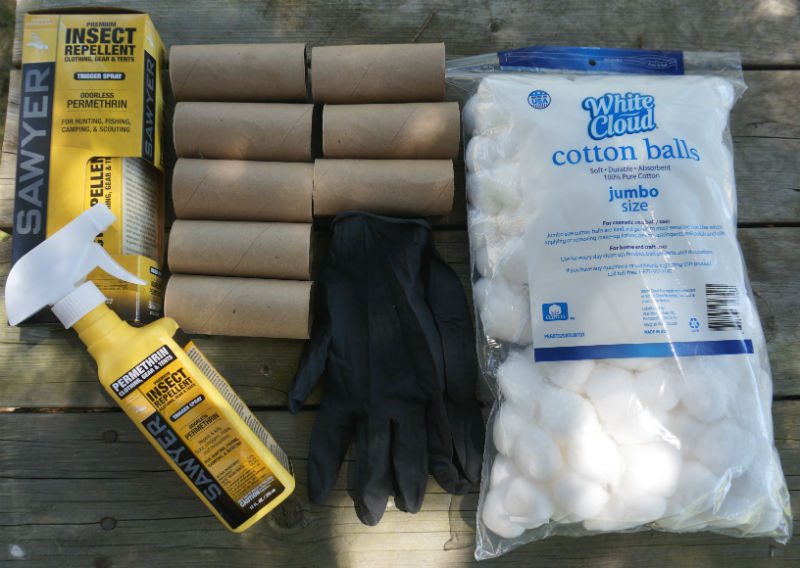
So here's all you need to do to simply and CHEAPLY make your own anti-tick tubes.
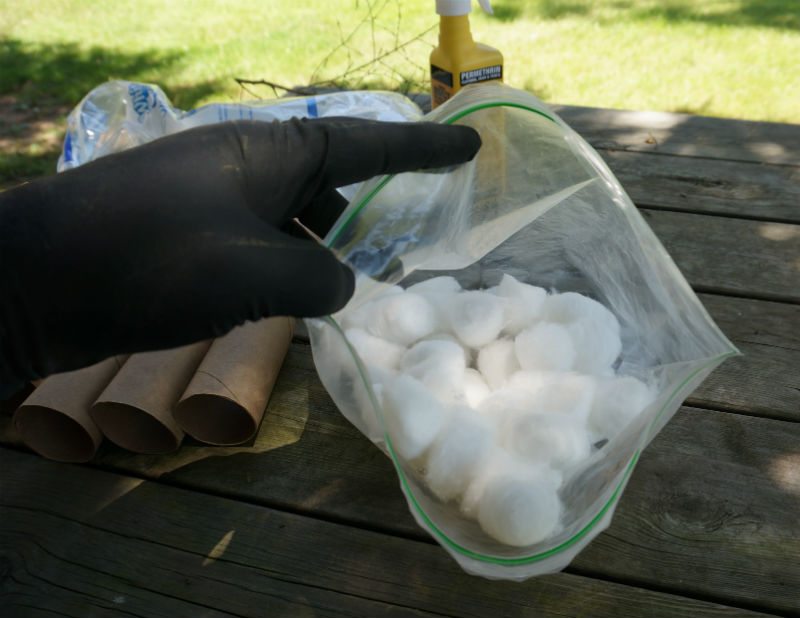
First, do this outside where there is good ventilation. Permethrin is, after all, toxic. Don a pair of rubber gloves and place a couple dozen cotton balls into a zip-lock baggie. You'll want around four cotton balls per tube, so you may require 100 or more cotton balls, but it's better to work in smaller batches if you have a lot of tubes.
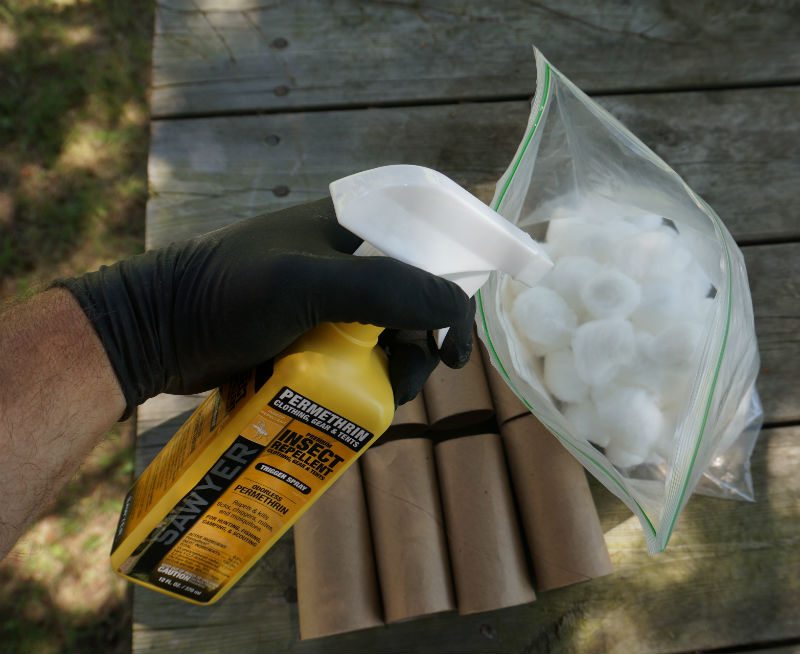
Second, spray the cotton balls with the Permethrin, tossing them around in the solution so that each cotton ball is well saturated.
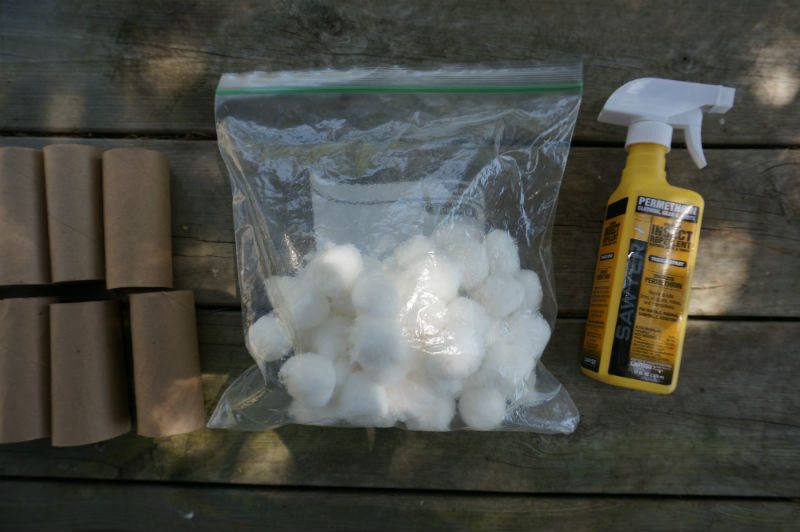
Third, seal the bag and let it sit for a little while. Then remove the cotton balls and let them dry out a bit.
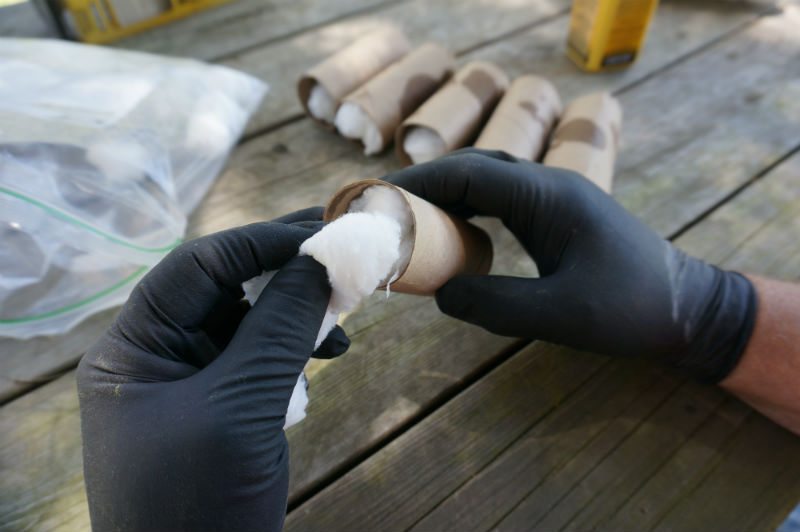
Next take about four Permethrin-saturated cotton balls and stuff them into the toilet paper tubes. Tease them apart a little bit before stuffing them into the tubes, just to more securely fill the tube and to make them more attractive to the rodents.
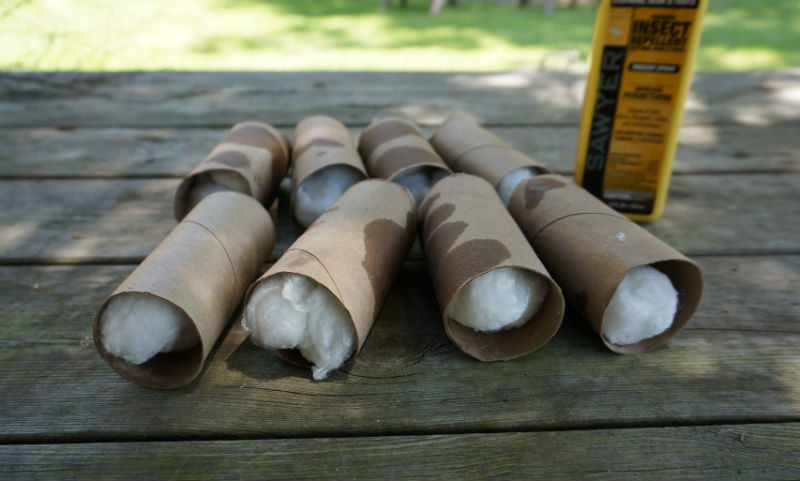
Then, you'll want around thirty or so anti-tick tubes to cover a yard that is roughly a half-acre in size. I have a big yard, so I made a ton of them to kill ticks in bulk.
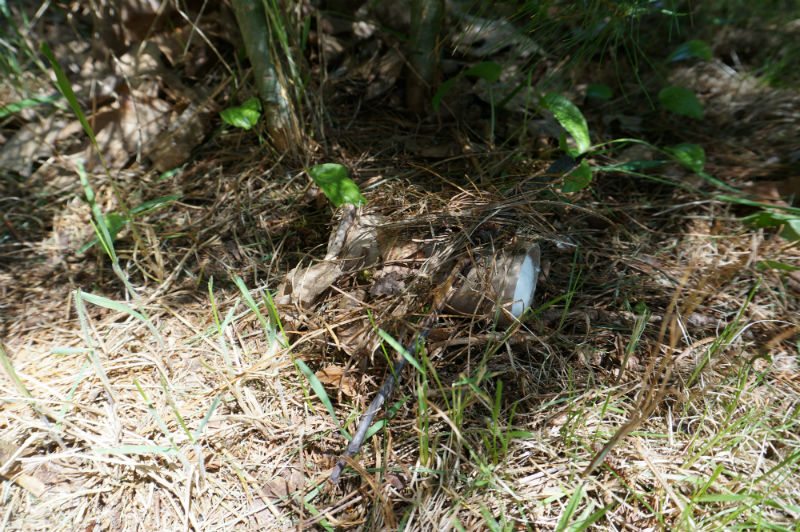
And finally, spread the anti-tick tubes around the perimeter of your lawn, or where the grass is long, around ten feet apart. You can camouflage them with leaves and twigs so they don't look unsightly to yourself or the neighbors. Put a few in the long grass next to your house as well.
Do this in the spring and summer—roughly in April and July, depending on your geographic location.
Do they work? Well, I've got a big yard that is bordered by woods and long grass. So far I've seen nary a tick on my person or property.
We've got squirrels running through the yard like a marauding army and mice up the wazoo. I've seen some of the tubes have been untouched, while others have been emptied and scattered about. So, I'm guessing that they're doing their jobs quite nicely.
And, I saved a couple hundred bucks in the process!
Like what you see here? You can read more great articles by David Smith at his Facebook page, Stumpjack Outdoors.
NEXT: BITING INSECTS TO WATCH OUT FOR IN THE FIELD: PART 1
WATCH
https://rumble.com/embed/u7gve.v3tpld/
